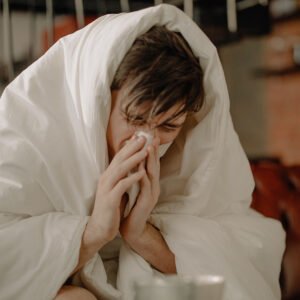With October on its way and lower temperatures already settling in, we are reminded that winter is indeed coming, and with it- higher employee absence rates. Not only the common cold, but also a possible increase in COVID-19 cases may cause staff to take a higher number of sick days. Add the gloom of colder months and the lower motivation levels it tends to bring about, and you have got a recipe for disaster.
The rise in absences during winter can be a huge challenge for businesses not only due to direct costs, but productivity losses, too. This is why it is important for employers to be prepared to manage it.
Why Are Absence Rates Higher in Winter?
To effectively manage the amount of sick leave taken by staff during the colder months, it can be helpful to break down the main reasons that cause it:
Spike in Colds and the Flu
The first signs of cold and flu cases being on the rise tend to start around October and peak in January or February. There are various theories as to why this might be, including the cold affecting how well our immune systems function against viruses, people spending more time in crowded spaces indoors, and getting less exposure to sunlight.
Additionally, cold air tends to cool our nasal passages, slowing down mucus clearance and allowing viruses to penetrate our body’s initial defence mechanism more easily. It also slows down the activity of our immune cells which engulf and digest viruses.

Seasonal Affective Disorder (SAD)
SAD, also known as ‘winter depression’, usually affects people during the colder, darker months of the year, and it can manifest through various symptoms such as a persistent low mood, lack of energy and motivation, difficulty concentrating and a loss of interest in everyday activities.
The main theory as to why this occurs entails that a part of our brain called the hypothalamus stops working properly due to a lack of sunlight. This can affect the production of melatonin in our bodies, lower our serotonin levels, and disrupt our circadian rhythm.

Impact of Winter Absenteeism on Businesses
In addition to the direct costs associated with employee absenteeism (reported to reach around £77.5 billion each year), there are indirect costs related to it which are no less significant. These include lost productivity, excessive time spent on making alternative arrangements, and lower service standards due to understaffing. Additionally, high absence rates can lead to poor morale among colleagues, especially if employees have to constantly fill in for absent staff.

Reducing Winter Absences at Work
To reduce the effect that high absence rates can have on your business this winter, it is important to have adequate measures in place that can help you. These may include:
Counteracting the Spread of Airborne Infectious Diseases
To prevent the transmission of airborne diseases at the workplace, it can be beneficial to focus on improving the air quality within the space. As opening the windows to allow fresh air inside is not exactly desirable during winter months, it might be a good idea to invest in portable air cleaners, or air sanitisation units which remove viruses, bacteria, mould, fungi, and odours.
Preventing Presenteeism
Whether it be due to cultural expectations, financial reasons or a sense of obligation, workplace presenteeism (attending work while unwell) is quite common. Not only does this practice lead to impaired productivity, but it also threatens the wellbeing of co-workers, resulting in higher absences, potentially of multiple employees. This is why (although it might seem counter-intuitive at first) it is important to encourage staff to take sick leave instead of attending work while feeling unwell.

Focusing on Mental Health
Since SAD is one of the major reasons for increased absence rates in winter, it is important to provide employees with a safe space to share how they feel and face the mental health issues that they might be experiencing. Introducing an EAP (Employee Assistance Programme) is a good way of doing this as it can help your workers address and deal with personal issues which may otherwise adversely impact their performance and cause further absences.

Are you in need of a solution to improving your employees’ mental health and reducing absence rates this winter? Click here to learn about Healthscreen’s Services!







